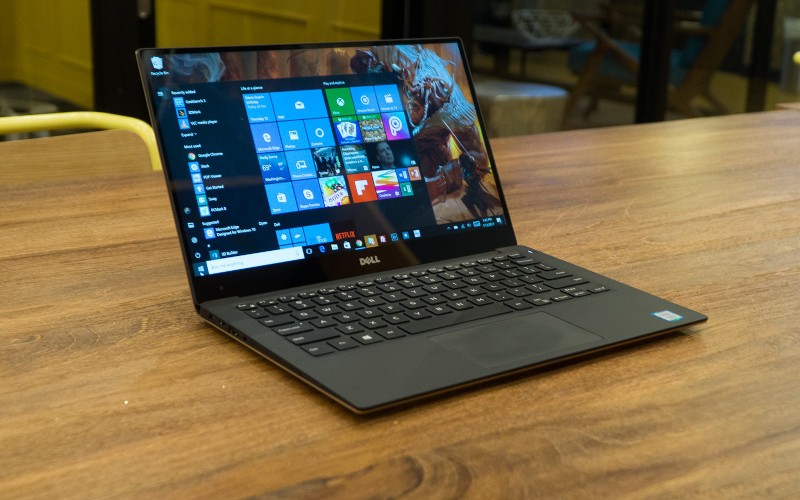If you’re new to the world of computers, it can be a little intimidating when you try to install Windows for the first time. It’s easy enough if your computer came with an operating system already installed on it, but what do you do if that’s not the case?
What if you have a brand-new computer and no operating system?
You have two options: buy an operating system or install one yourself. In most cases, it’s much cheaper and easier to install one yourself. This guide will show you how to install Windows 10 on a new PC without an operating system.
We’ll walk through both methods so you can decide which is best for your situation.
How Do I Install Windows On A Computer Without An Operating System?
What You Will Need
- Windows 10 ISO file
- Disc installation, USB flash drive, or CD-ROM Drive
There are three types of installation, which include:
- Upgrading
- Using USB Flash Drive
- Installation Disc
Therefore, you must select one of these three options and follow a step-by-step guide.
Part 1: Booting Your Device to the Windows 10 Installer
You must connect Windows 10 installation media to the PC before installing it. If you don’t have a copy of Windows 10, visit Microsoft’s website and download it for free. After that, you can follow these steps:
Restart Your PC
The first thing you need to do is restart your computer. You can usually do that by pressing and holding down your computer’s power button. From there, you should see a screen asking you if you want to boot from CD or DVD.
Open the BIOS, Press and Hold the F2 Button or DEL
The next step is to boot into your computer’s BIOS (short for Basic Input/Output System). Do that by pressing and holding either F2 or DEL on your keyboard as soon as you press and hold down your computer’s power button.
If you pressed an incorrect key, press that key again. You should see a screen with a menu of options in a few seconds.
Choose the Boot Bab
When you see that screen, select Boot from the Options menu with your arrow keys. You should see another menu with two options: Boot Mode and Boot Order. Select Boot Mode and then press Enter on your keyboard.
Choose a Booting Device
When you see that screen, use your arrow keys to select CD-Rom Drive, Removable Devices, USB Flash Drive, and Disc Installation. This will vary depending on what devices are connected to your computer. Once you’ve selected a booting device, press Enter on your keyboard.
Press the [+] Key
After choosing your booting device, you should see a screen that asks you to press any key to boot from a CD or DVD. It will be the default boot option first option on that screen. Press any key on your keyboard and wait for Windows 10 installation media to load.
Press {F10} to Save the BIOS Settings
When you see that screen, use your arrow keys to select Save and press Enter on your keyboard. You’ll then be asked if you want to save your current BIOS settings or load defaults. Press Enter again to load defaults.
Wait For the PC to Restart
Now your computer will restart. It should automatically boot from a CD or DVD and install Windows 10 on your device.
Part 2: The Installation of Windows 10
Here, there are language commands, time zones, and keyboard layouts. Choose your location from a drop-down menu and click Next. You can also change your keyboard layout here if you want to. After that, follow the steps below:
Click the Next Button
When done looking at your settings, click on Install Now.
Click Next and Input the Windows 10 Product Key
After clicking Install Now, enter your Windows 10 product key. This will activate your installation of Windows. Now, wait a while and follow the on-screen instructions to complete your installation. This process may take a while, depending on how much data you have to transfer to your new operating system.
You can watch it progress or do something else and return later. It is safe to leave it alone and do other things on your computer while it installs.
Click “Accept” Box
You’ll also see a pop-up box that says Let’s get started. Click on Accept and then click Next. Now, you can start using your computer with Windows 10. When installing your new operating system, don’t forget to back up all your files on an external hard drive or online backup service.
If anything happens to your computer, you will have a copy of all your important files somewhere else to easily recover them.
Can You Install Windows 10 On A New PC Without USB?
While installing Windows 10 without USB is easy, you’ll need an ISO file or DVD. These will be helpful if your computer doesn’t have a CD/DVD drive. However, the only issue is that these files are large, and most of us don’t like downloading them repeatedly.
We can use a bootable USB to install Windows 10 on new PCs in such cases.
But some questions might come to mind. Do we need the product key? Is it legal to install Windows 10 from a USB drive? How long does it take to complete the installation process? And many more. So let’s discuss all those queries one by one.
Let’s Start!
- First, you need a 32-bit or 64-bit version of Microsoft Windows 10 installed on your system with at least 4GB of RAM space and an Internet connection.
- The next step is downloading the media creation tool from the official website. It is a single executable file that will help you download ISO files and create a bootable USB drive for installing Windows 10.
- Once downloaded, run it and choose to Create installation media option.
- Now select Language, Edition, and Architecture according to your requirements.
- Once done, click on the Next button. You’ll be asked whether you want to create a bootable USB flash drive or DVD.
- Choose the DVD option since you’re not using USB for installing Windows 10. Wait for a few minutes till it completes downloading the required files.
After that, you’ll get the ISO file required for the installation process.
How Do You Install Windows 10 From BIOS?
It’s pretty straightforward to install Windows 10 from BIOS.
Just follow these simple steps:
- You need to enter BIOS settings on your computer by restarting your computer and pressing the F2 or Del key. It will open a screen where you’ll see several options.
- Choose the Boot option and move to Boot order. Here you’ll see a list of devices attached to your system.
- Select the USB drive from here and save changes by pressing the F10 key. This will make the USB drive as first boot device in the BIOS menu.
- Restart your computer and enter the BIOS menu by pressing the F2 or Del key.
Once you restart your computer, it will take you directly to the BIOS.
Now press 1 on your keyboard to boot from USB. It will ask for confirmation where you need to press the F key. If everything goes right, your system will install Windows 10 in a few minutes. You’ll be asked whether you want to create an account while the installation process is running and whether you want to update it.
Once done, your system will reboot automatically. Wait till it boots up again, and enjoy the latest version of Windows OS on your new PC.
How Do you Install Operating System On New Computer Without CD?
You can also do the process without using the CD. The good thing is that you’ll save time and trouble buying a CD/DVD.
Follow these steps to do so:
You’ll need a bootable USB drive or DVD to install an ISO file. You can use third-party software to create a bootable USB drive or DVD if you have none. For example, Rufus allows you to create a bootable USB drive in no time.
Once done, insert your USB drive into your computer and restart it.
- Now enter the BIOS menu by pressing the F2 or Del key repeatedly until it opens up.
- Go to the Boot order section and select USB as the first boot device. Save changes by pressing the F10 key and restarting your system again. This time it will take you directly to BIOS, where you need to press 1 on the keyboard to boot from the USB drive.
- After entering into the operating system installation process, select the custom option and click the Next button twice, where you’ll be asked whether you want to update.
- Now click on customize option to change the hard disk drive’s installation location and partition size.
- Select C Drive and choose the maximum available space. Click on the format option to format C Drive and wait till it’s done.
- Now click the Next button twice, where you’ll be asked about your username and password details.
- Enter your username and password details and the security question answer (if required).
- Click the Next button once again, where you can choose a time zone and additional options like adding a user account, personalizing your desktop background, etc.
What Happens If Your Computer Doesn’t Have An Operating System?
Possibly, however, your PC can stop working since Windows is considered the operating system, which is the program that controls all of a computer’s functions. You can boot up your computer, but you won’t be able to do anything with it.
It may even come up with a message saying to press any key to boot from a CD or DVD, and if you don’t have one inserted, it will reboot.
If you want to use your computer without an operating system, install one first. There are two ways to do so:
Disc or another computer.
Either way, you will need access to another computer to download software onto a USB drive, burn it onto a disc, and then transfer it. Then insert your USB drive into your non-working PC and restart it.
You should see a list of options on the screen where you can choose to start your computer from the USB drive. Choose that option and follow the instructions for installing an operating system.
Alternatively, you could connect your non-working PC to another using an Ethernet cable (you will also need an Internet connection) and open Internet Explorer on both computers. This allows them to share files.
- Open Internet Explorer on another computer and go to Microsoft website.
- Download the Windows ISO file here and save it onto your desktop.
- Right-click the ISO file icon and select the Copy option from the Menu bar.
- Go back to the main window of your non-working PC, open File Explorer, and go to C Drive.
- Right-click anywhere inside a space in the C Drive folder, select the Paste option from the menu bar, and wait till the copying process is done.
Frequently Asked Questions
Why is the Operating System So Important?
It is a program that controls all of your computer’s functions. It allows you to run applications and games on your computer. It also manages how data is stored on your hard drive and other internal components. Many operating systems are available for computers, including;
Microsoft Windows, Apple Mac OS X, and Linux. If you don’t have an operating system installed on your computer, then it will not be able to function properly.
Conclusion
Installing Windows 10 on a new computer can be challenging, especially if you’ve never done it before. It’s not difficult, but there are some things to watch out for.
Therefore, you need to read every step carefully and each step multiple times so you don’t miss anything. If you find it still challenging, then consider hiring an expert to do it for you. They may charge more than doing it yourself, but they’ll save you time and headaches in the long run.
Hopefully, this article has helped get you started with your installation process.







